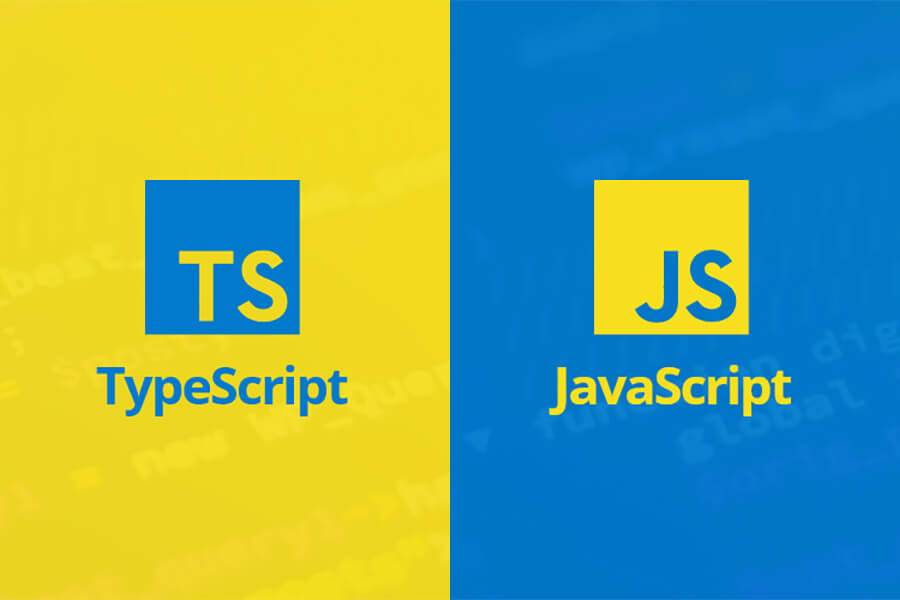JavaScript vs. TypeScript: Which Language is Best for Your Next Project
Did you know that over 69% of professional developers worldwide use JavaScript? This makes JavaScript the top choice in web development. However, TypeScript is also very popular for businesses and developers. Over the years, it has challenged JavaScript’s dominance. When comparing JavaScript vs TypeScript, which is best?
As the web development scene changes, the fight between JavaScript and TypeScript is more discussed. Choosing between JavaScript and TypeScript is more critical than ever. JavaScript has been the go-to for building interactive web apps. But TypeScript brings new features. These suit the needs of modern software development, especially in AI and machine learning.
This article explores the differences, strengths, weaknesses, and integrations of JavaScript and TypeScript. We’ll discuss their history, syntax, and real-world uses. We’ll also examine how these programming languages affect web development. Finally, we’ll examine their support and use of AI and machine learning.
Introduction to JavaScript and TypeScript
The Great Debate
For a while, JavaScript was the top choice for web apps for its code quality. But TypeScript has brought new safety and tools and is changing how developers work on websites. TypeScript works well with frameworks like Angular, React, and Vue.js. It also improves code quality, maintainability, and refactoring. With this information, you can pick the best one for your project.
JavaScript is a vibrant, interpreted language crucial for making dynamic web apps. It allows for interactive content processing on web pages. In addition to its original use for this, it’s also used on servers (with Node.js) and in app development.
What is JavaScript?
JavaScript is a dynamic language created in 1995 by Brendan Eich for the Netscape Navigator web browser. It’s now widely used for dynamic web, server, and mobile apps.
It is a versatile language for creating exciting web pages. It’s mainly used for client-side work, empowering developers to make sites more dynamic. Because of its flexibility, it’s key for crafting today’s web experiences.
What is TypeScript?
Unlike JavaScript, TypeScript is an extension that introduces static typing. Microsoft backs it and offers a more stable environment for building large web apps. Its main goals are enhancing code quality and making developers more effective.
The choice between JavaScript and TypeScript depends on the project and team. Each has pros and cons, but they play big roles in modern software development.
The Rise of TypeScript in Modern Web Development
Recently, TypeScript has seen a significant uptick in usage. The growing complexity of web projects demands better tools for managing coding. TypeScript’s type checks and tight-knit integration with key tools attract those aiming for safer and easier-to-maintain code.
JavaScript versus TypeScript: Pros and Cons
The main difference between JavaScript and TypeScript is how they handle type checking. JavaScript is dynamically typed, allowing variables to take on any data type. Moreover, it does type-checking during runtime. Unfortunately, this can result in unforeseen behavior, and it’s harder to catch specific errors while developing.
On the other hand, TypeScript is a statically typed language. It lets developers specify the types of their variables, function inputs, and outputs when they first mention them. This setup allows the TypeScript compiler to check types before the code runs. This approach greatly boosts code quality and maintainability, enhancing how the code is restructured and debugged.
Advantages of Using JavaScript
- Ease of Learning: JavaScript is relatively easy to learn, making it accessible for beginners.
- Versatility: It runs in the browser and on servers (thanks to Node.js), making it versatile.
- Community Support: Finding resources, libraries, and frameworks is straightforward with a large community.
- Speed: As a client-side language, JavaScript is fast because it doesn’t need to communicate with the server for most tasks.
Advantages of Using TypeScript
As web development projects get more complicated, TypeScript stands out. It offers many benefits over JavaScript. These include better code quality, easier maintainability, improved tooling, and scalability. TypeScript is an excellent choice for those in front-end and full-stack programming.
- Better Tooling and IDE Support: The TypeScript ecosystem includes many development tools and IDE integrations. They make the development process smoother. For example, there’s intelligent code completion and refactoring. Also, type-checking and precise error reporting help a lot. Tools like Visual Studio Code and the TypeScript compiler offer everything a developer needs. They help improve productivity.
- Easier Refactoring and Scaling: The static typing and type safety of TypeScript simplifies refactoring and scaling projects. Adding type annotations and using type inference allows safer code changes. The TypeScript compiler checks for type issues, boosting code maintainability and scalability. It helps teams accommodate new needs and grow their projects smoothly.
- Improved Code Quality and Maintainability: TypeScript’s static typing boosts code quality and maintainability. It forces type safety with type annotations and inference, which means developers find type errors while coding, not later. Catching errors early leads to more stable codebases, which lowers the time spent on debugging and refactoring.
Type Checking: Static vs Dynamic Typing
JavaScript and TypeScript approach type checking differently. JavaScript is dynamically typed, while TypeScript uses static kinds. This difference is vital to understanding the pros and cons of each language.
Understanding Static Typing
In TypeScript, data types for variables, functions, and return values are set when declared. The TypeScript compiler then checks these types at compile time. It catches type errors before the code runs, making your code safer and easier to maintain.
The Benefits of Static Typing
Static typing in TypeScript has clear advantages. It makes refactoring easier and improves debugging. Plus, your code quality gets a boost. By finding errors early, developers spend less time fixing bugs. The TypeScript compiler also guides you by showing expected data types, making your code more reliable.
TypeScript in Frameworks and Libraries
The use of TypeScript in web development is on the rise. It’s now a crucial part of many frameworks and libraries. Let’s explore why TypeScript is gaining ground in web applications.
Angular: A TypeScript-based Framework
Google’s Angular framework is a good example. It’s developed with TypeScript. This choice brings significant benefits. Things like static typing and advanced tools help developers. They can make better, more secure apps. The match between Angular and TypeScript means a smooth ride for developers. It boosts the app’s quality and provides support for updating code.
React and Vue.js with TypeScript
React.js and Vue.js are known for using JavaScript, but now they are welcoming TypeScript, too. Adding TypeScript brings excellent advantages. It improves the app’s stability, the quality of the code, and how easily we can update it. This move has made TypeScript shine in larger, complex projects and become a favorite.
Integrating JavaScript with TypeScript
How to Integrate
The beauty of TypeScript is its seamless integration with JavaScript. Here’s how you can do it:
- Setup: Install TypeScript using npm: `npm install -g typescript.`
- Configuration: Create a `tsconfig.json` file to configure TypeScript compiler options.
- Renaming Files: Change your `.js` files to `.ts` files.
- Incremental Adoption: Add type annotations and gradually refactor your JavaScript code to TypeScript.
Benefits of Integration
- Smooth Transition: You don’t need to rewrite your entire codebase. Start with JavaScript and gradually adopt TypeScript.
- Enhanced Code Quality: Use TypeScript’s features to improve the reliability and maintainability of your code.
- Future-Proofing: Preparing your project for future growth and complexity.
Best Practices and Coding Standards
The use of TypeScript is rapidly growing in web development. Setting and following coding standards for precise, reliable, and scalable code is essential. These guidelines should include everything from type annotations to design patterns.
- TypeScript Coding Guidelines: Using TypeScript means adhering to known coding guidelines for easier reading and quality. This involves using interfaces with the same naming styles and type annotations. Following these rules helps keep a TypeScript project easy to work on and grow.
- Debugging and Error Handling: TypeScript can catch problems early, which is a huge benefit. It lets developers find and fix typing mistakes before the code even runs. They also build strong error handling to deal with issues when the software is live.
- Design Patterns and Type Safety: TypeScript’s static typing allows for more innovative design patterns focusing on type safety and care. Using interfaces to communicate between parts of the software ensures that it follows the best practices of object-oriented design. This approach helps development teams make more vital, significant, and easier-to-fix apps.
Tooling and Ecosystem
Support for JavaScript and TypeScript is critical for anyone in tech or business. JavaScript boasts a rich ecosystem. It uses tools like Webpack, Babel, and Eslint to help create, test, and launch applications.
TypeScript enjoys strong support from Microsoft, its creator. Visual Studio Code, Microsoft’s IDE, fits TypeScript like a glove. It brings perks like code fill-ins, fixing, and type-checking to the coder’s fingertips.
Support for TypeScript has also grown. Libraries and frameworks like Angular, React, and Vue.js now work smoothly with it. This means coders have more tools and ongoing help when using these top frameworks.
Ultimately, the flourishing tool sets and ecosystems make JavaScript and TypeScript top picks. Choosing one boils down to what a project needs and what the coder knows and likes.
Conclusion
Both have shown their strengths in the JavaScript vs. TypeScript debate. JavaScript is popular for its flexibility and huge community support. However, its lack of strict type-checking can be an issue for big projects.
On the other hand, TypeScript, which builds on JavaScript, shines. It helps developers avoid errors and organize their code. This is great for large projects, offering better code management. It’s an intelligent choice for severe applications.
While JavaScript is essential for web work, TypeScript offers key advantages for specific needs. So, the best choice comes from considering your project’s needs and your team’s skills. This way, you can choose to support your software’s long-term success.








